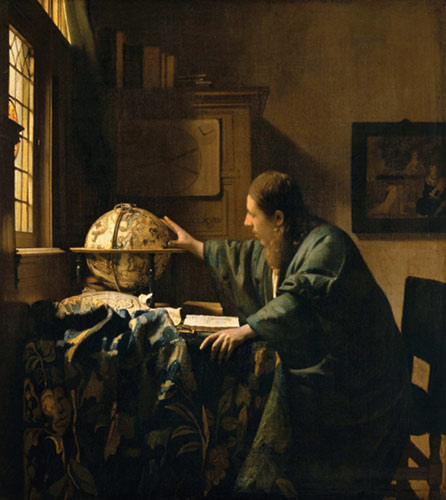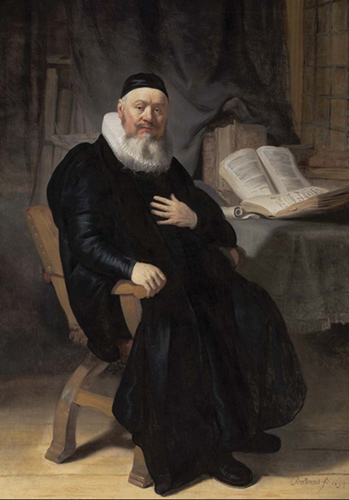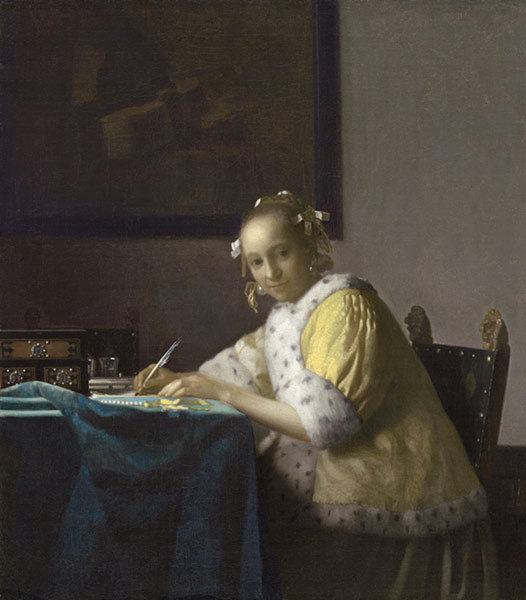Beautifully preserved and carefully selected, a number of 17th-century Dutch masterpieces by artists such as Rembrandt, Vermeer, and Gabriel Metsu are on view beginning October 11.
Whether the subject was royalty or farming peasants, Dutch painters depicted all things in stunning, masterful detail during the region’s 17th-century “Golden Age.” A massive influx of wealth stimulated a vibrant art market that demanded genre subjects largely free of religious iconography. Nobles, merchants, milkmaids, peasants, still life, and landscape abounded. A healthy economy also fostered clear class distinctions, depictions of which feature in an upcoming exhibition at the Museum of Fine Arts, Boston.

Johannes Vermeer, “The Astronomer,” 1668, oil on canvas, (c) Museum of Fine Arts Boston 2015
“Class Distinctions: Dutch Painting in the Age of Rembrandt and Vermeer” brings together 75 paintings borrowed from European and American public and private collections — some of which have never been shown in the United States. The museum reports that the exhibition is “arranged according to 17th-century ideas about social stratification … divided broadly into three classes — upper, middle, and lower — and within them, into sub-groups.”

Rembrandt van Rijn, “Reverend Johannes Elison,” 1634, oil on canvas,
(c) Museum of Fine Arts Boston 2015
Fun for viewers is the encouragement to muse on the exquisite details of the works, looking closely for visual clues that may differentiate a noble from a merchant or a mistress from a maid. “A final section explores the places where the classes in Dutch society met one another,” the museum states. “Opportunities for these encounters arose in the city and the country, winter and summer, indoors and out, at leisure or at work, on the threshold of a house or of a business.”

Jacob Ochtervelt, “Street Musicians at the Door,” 1665, oil on canvas, (c) Museum of Fine Arts Boston 2015
Works by the famed painter Johannes Vermeer feature in the exhibition, including “A Lady Writing,” circa 1665, and “The Astronomer,” circa 1668. “A Lady Writing” is absolutely stunning in its soft clarity. Warmly gazing out at the viewer is a well-to-do female sitter, blanketed in a soft glow that emanates from the upper left. Her status is clearly noted in the lovely yellow and white fur garment she wears. She pens a note, only to briefly stop for this captured moment. The piece is nearly photographic in its detail, recalling scholarly debates surrounding whether the artist used the aid of emerging optical equipment to complete his paintings. Regardless, the picture is breathtaking in its luminousness and timeless quiet.
Another highlight of the exhibition is Rembrandt van Rijn’s “Reverend Johannes Elison” of 1634. Confident, stoic, and powerful, the subject sits in full view of his audience. His modest but imposing black costume and collar clearly designate his position as a man of God. Lying to his left are the open pages of his manuals and Bibles, alluding to his position and education as well.
“Class Distinctions: Dutch Painting in the Age of Rembrandt and Vermeer” opens on October 11 and will hang through January 18.
To learn more, visit the Museum of Fine Arts Boston.
This article was featured in Fine Art Today, a weekly e-newsletter from Fine Art Connoisseur magazine. To start receiving Fine Art Today for free, click here.








